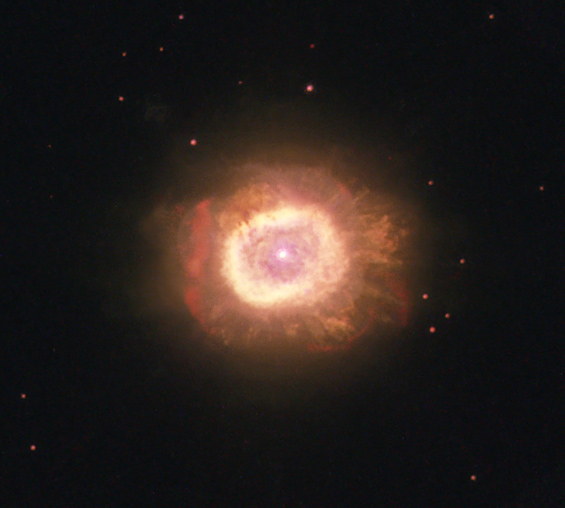
Campbell's Star (2013)
Campbell’s star is another Wolf-Rayet star with a nebula surrounding it. Conveniently, ESA published an article about it on this same day and you can read about it here.
By coincidence I was rummaging through the HLA and decided I wanted to do this object but then realized I had just been looking at that ESA release maybe an hour earlier without realizing I was looking at the same thing. Processing sure makes a difference in how things can appear. It just looks like an oval without much detail in the HLA previews.
I feel like a bit of a cheater because once someone else has taken a shot at it, it becomes a lot easier to find little things you’d like to fine tune beyond what your predecessor did. I probably wouldn’t have pushed it as far as I could go without an example to work with.
One thing I did notice without any help was that there were some interesting structures visible only in some NICMOS data, here appearing as the most red areas. What do your near-infrared eyes see, NICMOS?
The list of data is awkward. All of these were from WFPC2 PC except for the f212n filter. The blue channel is just a quick median stack without much else while the red and green channels received special care.
Red: NICMOS f212n+f953n+f673n+f658n
Green: f656n+f631n
Blue: f588n+f502n+f487n+f375n
Copyright information:
Hubble data is public domain, but I put a lot of work into combining it into beautiful color images. The minimal credit line should read: NASA / ESA / J. Schmidt

This work is licensed under a Creative Commons Attribution 3.0 Unported License.


